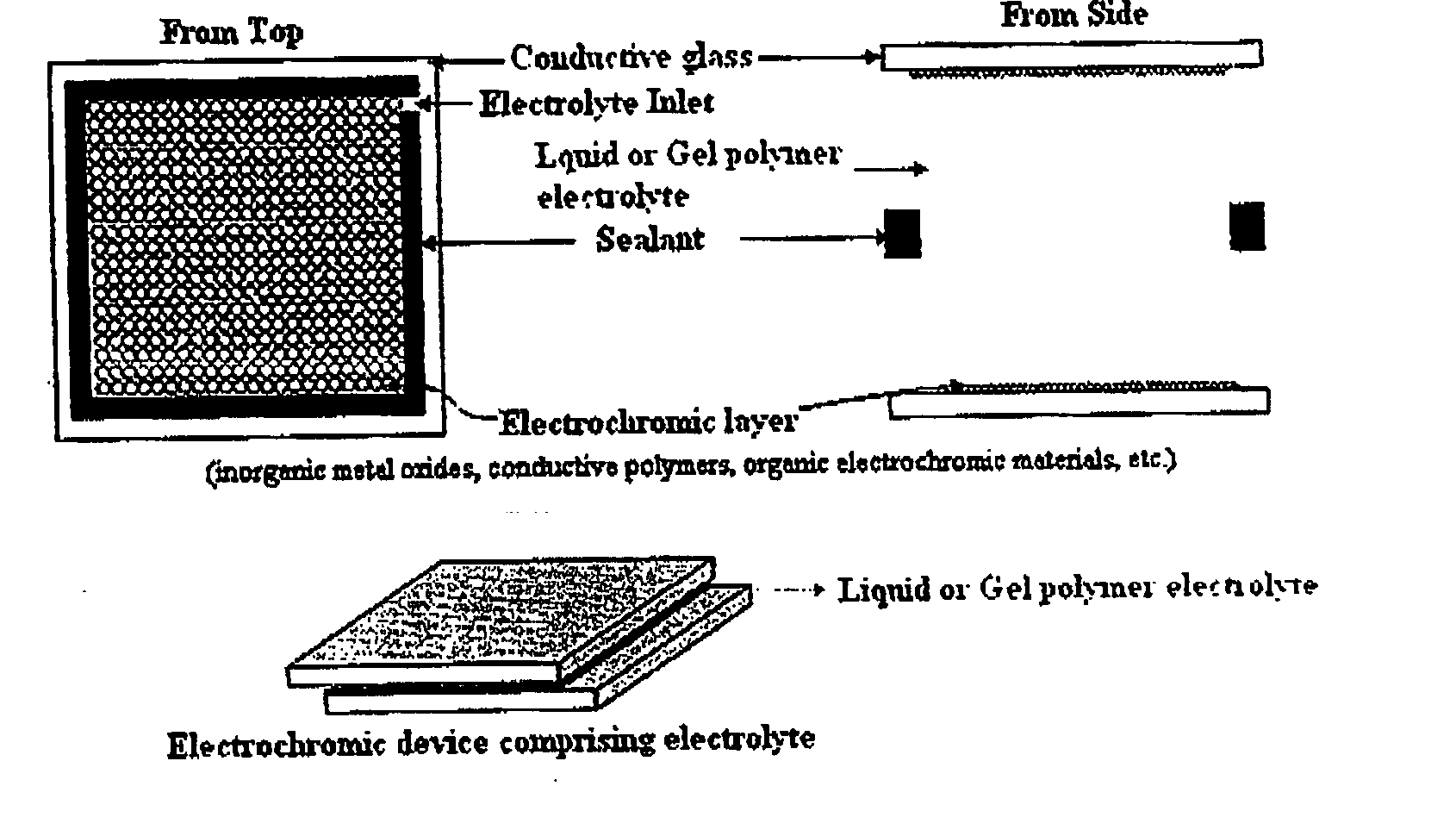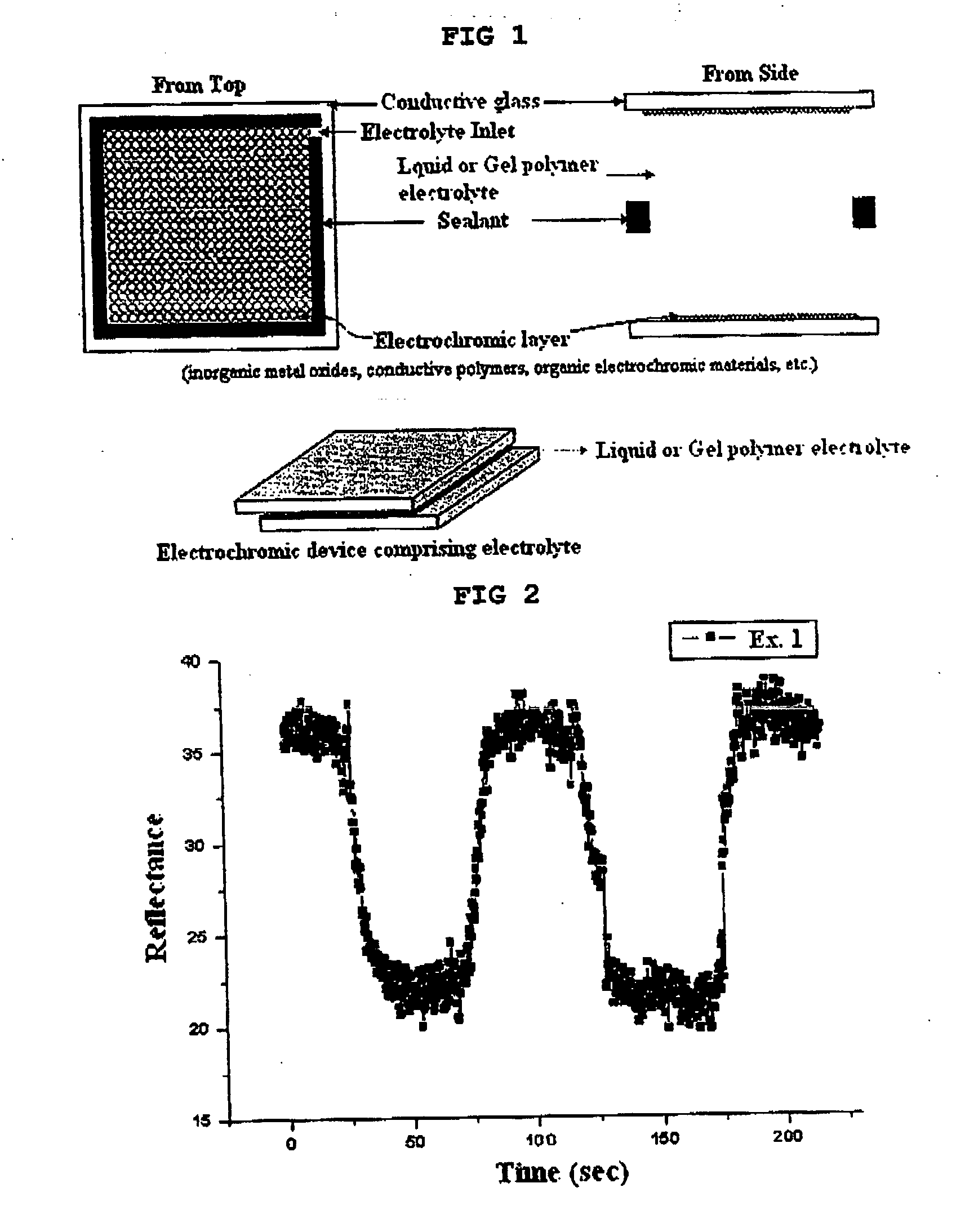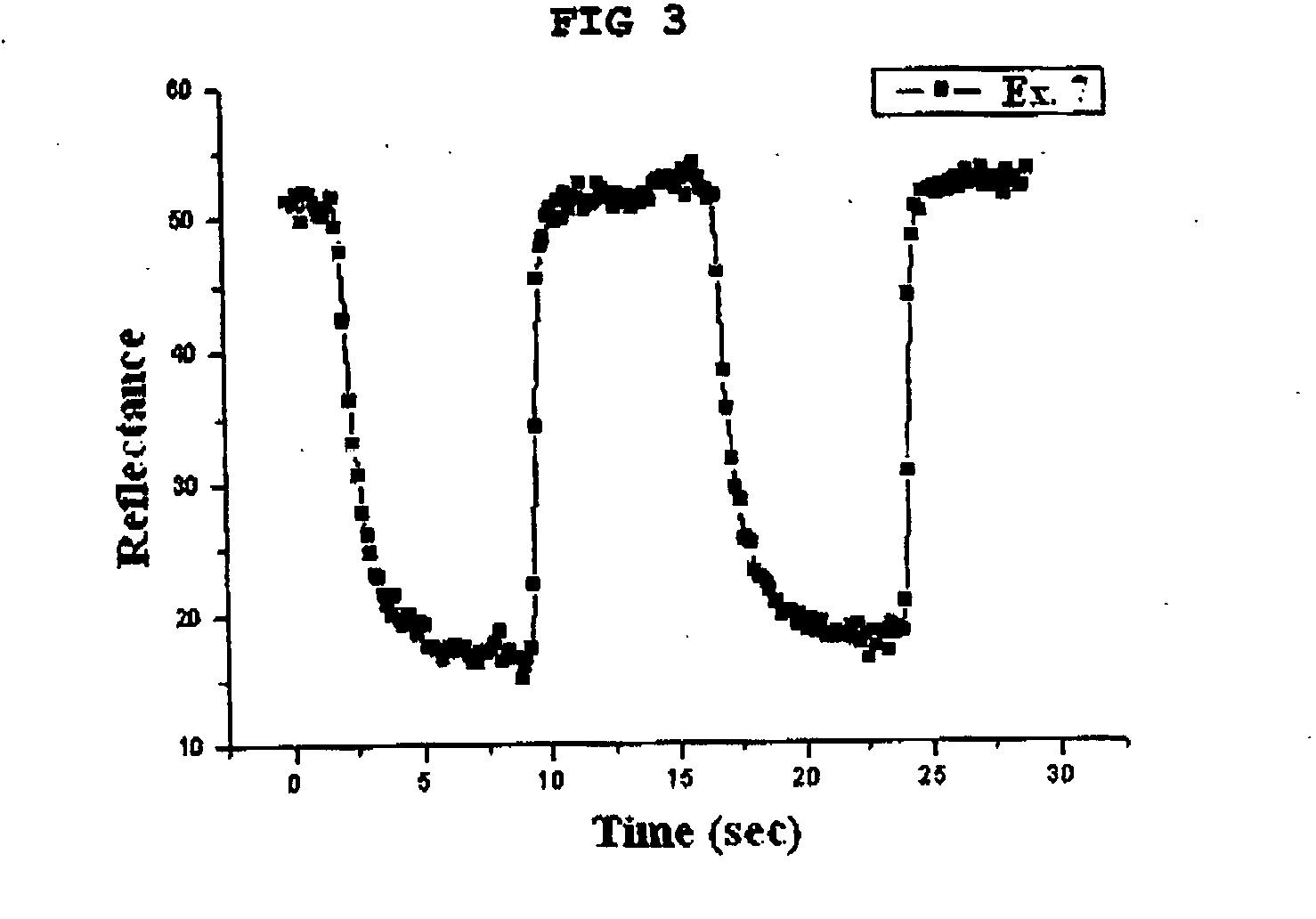Gel polymer electrolyte containing ionic liquid and electrochromic device using the same
a gel polymer electrolyte and ionic liquid technology, applied in the field of ionic liquid gel polymer electrolyte, can solve the problems of lowquenching rate, easy decomposition of organic materials, and presence of residual images, so as to improve the effect, improve the viscosity of the solution, and improve the effect of ion conductivity
- Summary
- Abstract
- Description
- Claims
- Application Information
AI Technical Summary
Benefits of technology
Problems solved by technology
Method used
Image
Examples
examples 1-7
EXAMPLE 1
Manufacture of Electrochromic Device
[0067] 1-1. Manufacture of Electrochromic Device Free from Electrolyte
[0068] A working electrode was manufactured by forming a thin film of WO3 on ITO glass (Samsung Corning Co.) as a transparent electrode through a sputtering process to a thickness of 150 nm. A counter electrode provided with a thin film of NiO having a thickness of 150 nm was also manufactured in the same manner as described above. The working electrode and the counter electrode were sealed together along their edges except a portion by using a sealant containing a glass ball spacer, as shown in FIG. 1, to provide an electrochromic device free from electrolyte.
[0069] 1-2. Manufacture of Electrochromic Device Comprising Ionic Liquid Gel Polymer as Electrolyte
[0070] Prepared was an electrolyte containing 1M LiClO4 as a lithium salt and further including a mixture formed of [EMIM] [BF4] as ionic liquid (wherein EMIM represents ethyl methyl imidazolium), HEMA (2-hydrox...
example 2
[0073] Example 1 was repeated to provide an electrochromic device comprising an ionic liquid gel polymer electrolyte, except that [BMIM] [TFSI] (wherein BMIM represents butylmethyl imidazolium and TFSI represents bis(trifluoromethanesulfonyl)imide) was used as ionic liquid instead of [EMIM] [BF4]. Similarly to Example 1, a slightly opaque gel polymer was formed by the polymerization. The ion conductivity of the resultant gel polymer electrolyte was about 0.5˜3×10−3 S / cm.
[0074] The finished electrochromic device developed a dark blue color and showed a transmission of 29%. Upon quenching, the electrochromic device was transparent and showed a transmission of 57%. As mentioned in Example 1, the electrochromic device provided excellent memory effect over 72 hours or more.
example 3
[0075] Example 1 was repeated to provide an electrochromic device comprising an ionic liquid gel polymer electrolyte, except that [BMIM] [Triflate] was used as ionic liquid instead of [EMIM] [BF4]
[0076] Contrary to Example 1 and Example 2 using [EMIM] [BF4] and [BMIM] [TFSI] as ionic liquid, respectively, a very transparent gel polymer was formed. The ion conductivity of the resultant gel polymer electrolyte was about 0.5˜3×10−3 S / cm.
[0077] The finished electrochromic device developed a dark blue color and showed a transmission of 31%. Upon quenching, the electrochromic device was transparent and showed a transmission of 78%. As mentioned in Example 1, the electrochromic device provided excellent memory effect over 72 hours or more.
PUM
 Login to View More
Login to View More Abstract
Description
Claims
Application Information
 Login to View More
Login to View More - R&D
- Intellectual Property
- Life Sciences
- Materials
- Tech Scout
- Unparalleled Data Quality
- Higher Quality Content
- 60% Fewer Hallucinations
Browse by: Latest US Patents, China's latest patents, Technical Efficacy Thesaurus, Application Domain, Technology Topic, Popular Technical Reports.
© 2025 PatSnap. All rights reserved.Legal|Privacy policy|Modern Slavery Act Transparency Statement|Sitemap|About US| Contact US: help@patsnap.com



